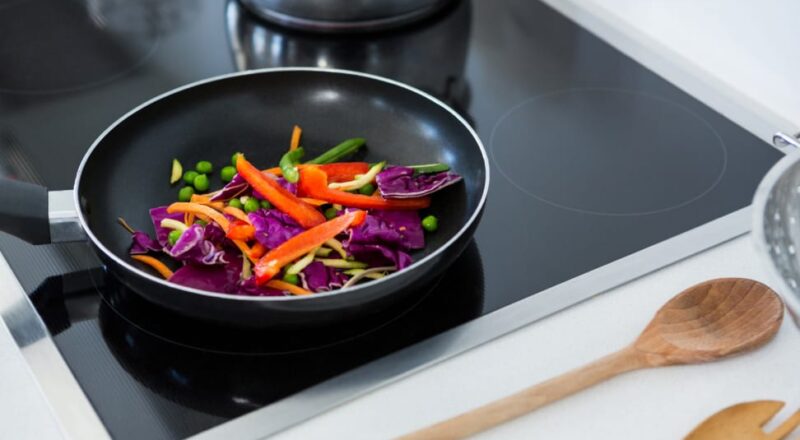Cooking with cast iron on induction cooktops is popular among kitchen enthusiasts and professionals. However, one common issue is the slipping of cast iron pans on these smooth surfaces. Understanding how to prevent cast iron from slipping on induction is crucial for a seamless cooking experience. This article will guide you through various techniques and tips to ensure your cast iron stays stable while cooking.

Understanding the Slipping Issue
Induction cooktops have a sleek, glass surface that can be quite different from traditional gas or electric stoves. The smooth surface can sometimes cause cast iron pans to slip, especially when the bottom of the pan is not completely flat or if the cooktop surface is wet or greasy. This can lead to uneven cooking and even potential accidents in the kitchen.
The Basics of Induction Cooking
Before diving into solutions, it’s essential to understand how induction cooking works. Induction cooktops use electromagnetic fields to heat the pot or pan directly. This means that the cookware itself becomes the heat source, leading to faster and more efficient cooking. However, this also means that the cookware needs to have a certain level of magnetic properties. Read more about induction compatibility here.
Why Cast Iron Works on Induction
Cast iron is a great choice for induction cooktops because it is naturally ferrous, meaning it has the magnetic properties needed for induction cooking. However, its weight and often uneven bottom can contribute to slipping issues.
Preventing Slipping: Practical Tips
Ensure the Cooktop Surface is Clean and Dry
One of the simplest ways to prevent slipping is to ensure that both the cooktop surface and the bottom of the cast iron pan are clean and dry. Residual oils or water can reduce friction, making it easier for the pan to slip.
Use a Silicone Mat
Placing a silicone mat beneath your cast iron pan can significantly increase friction and reduce slipping. These mats are heat-resistant and provide a stable surface for your cookware. Learn more about induction-specific seasoning.
Check the Flatness of the Pan
Ensure that the bottom of your cast iron pan is flat. Warped pans are more likely to slip. If your pan is not perfectly flat, consider getting it professionally resurfaced or replacing it.
Consider a Slightly Textured Cooktop
Some induction cooktops come with a slightly textured surface that can help reduce slipping. If you’re considering a new cooktop, look for models that offer this feature for better stability with cast iron.
Maintaining Your Cookware
Regular Maintenance of Cast Iron
Regular maintenance of your cast iron cookware can also help in preventing it from slipping. Ensure that your cookware is seasoned properly to maintain a smooth surface. Check if your cast iron works well on induction.
Avoiding Uneven Browning
Slipping can lead to uneven browning and cooking. By following the above tips, you can ensure that your food cooks evenly. Explore more on handling uneven browning.
Additional Considerations
Using Induction-Compatible Cookware
Ensure that your cast iron is specifically designed for induction cooktops. Some pans are optimized for induction cooking, offering better performance and less slipping.
Adjusting Cooking Techniques
Sometimes, adjusting your cooking techniques can also help. Avoid pushing or sliding the pan vigorously, and try lifting it gently when repositioning.

Frequently Asked Questions
Can I use any cast iron on an induction cooktop?
Yes, most cast iron cookware is suitable for induction cooktops due to its ferrous nature. However, flat-bottomed pans are preferred to prevent slipping.
Why does my cast iron pan slip on the induction cooktop?
Slipping can occur due to a smooth cooktop surface, wet or greasy surfaces, or an uneven pan bottom. Ensuring cleanliness and flatness can help.
What can I do to stop my cast iron from slipping?
Consider using a silicone mat, ensuring the surfaces are dry, and checking the pan’s flatness. These steps can effectively reduce slipping.
For more in-depth insights, you can visit Leeknives which provides detailed information on cast iron compatibility with induction cooktops.
This article contains affiliate links. We may earn a commission at no extra cost to you.

